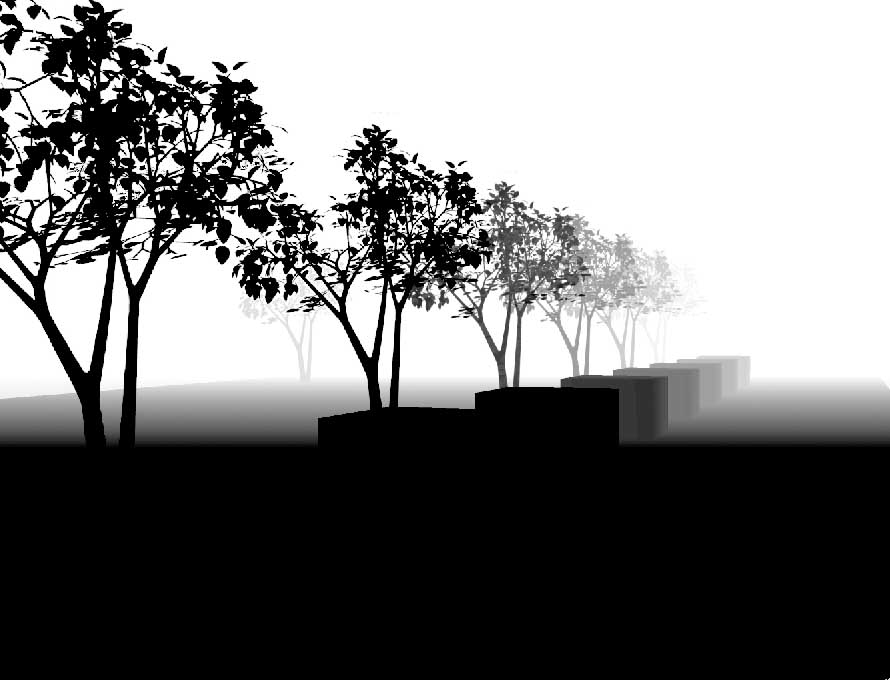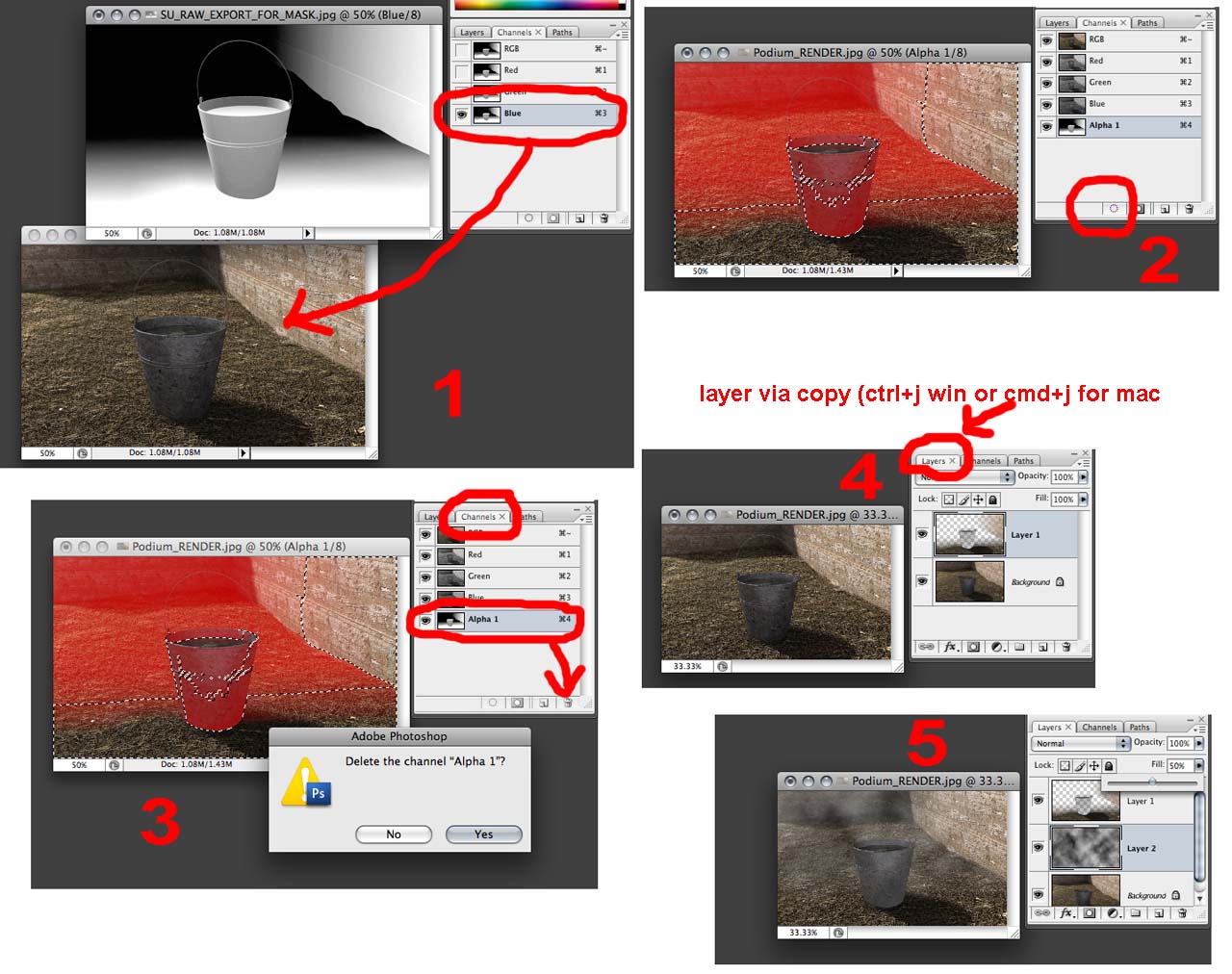Let's talk about D.O.F
-
No problem Gaieus

As you said, leave the note and link in this topic too so that people can follow, but try to put something on the title or something (like comunity Tutorial or something like that) to notice that this is a "open source" (lol) tutorial that anyone can change and share more tips.
David
-
OK, done:
http://forums.sketchucation.com/viewtopic.php?f=18&t=22355In order not to break the continuity of this topic, I left the original in place and only copied it over there.
-
@unknownuser said:
Hi guys.
So it is 2 diferent tutorials for 2 ways to work with dofs, the first one is done in photoshop and follows the basic rules; the second one is done in NET.Paint because it's free and open source and it's much easier than GIMP to understand and pick up (think of it as a photoshop with just the basic tools you need). So let´s start:
.............
David
About all this fine tutorial. First there's an issue with these depth maps. What if we have to deal with a transparent surface? See though mini cooper's glasses. What if we use alpha transparent png cut outs? For all these here's the solution:
"How to create a depth map using SU fog effect".- In SU > shaded with textures > turn shadows off > set fog color white, do some adjustments > light and dark to 0 > display edges off > export 2d graphic at N resolution
Here's an example after some adjustments.

In your favorite rendering engine, render using the same N resolution. (works fine with SU 2d export graphics)
In photoshop invert (CTRL+I, cmd+I(mac)) depth map > open channels palette > select R or G or B channel > drag and drop it on rendered image. This will give you a new A-channel. Filter > blur > lens blur...

(BTW a similar technic is useful for real fog effects -using clouds etc-)

So we don't really need to ask renderer to export a depth map, not always what we really need.
- In SU > shaded with textures > turn shadows off > set fog color white, do some adjustments > light and dark to 0 > display edges off > export 2d graphic at N resolution
-
@unknownuser said:
Solo, I'd like to take the camera out on the weekend and take a set of shots of a similar style house through the DOF range. To get as close as I can I need a few dimensions.
i dunno, the idea that a render's dof should match that of a camera seems sort of ridiculous to me.. for one, cameras always lie so stating them as truth doesn't work.
also, it's not as if cameras were made in order to produce varying dof as an artistic choice rather: dof is a result of aperture and distance to focal point which people have learned to creatively control.rendering isn't photography and the two should remain separate.. shoot photos that look good.. make renders that look good.. don't try to get all scientific about it.
-
Interesting point Jeff, however this begs the question then:
Are renders intended to be photo-real or as we see it real?
-
I'd have to disagree with Jeff on this one. A camera is about as close as we can get to simulating what we see with our eyes on a 2d image. It doesn't make much sense to me to try and fool the brain thinking what's on a paper is real life. When you hand someone a realistic rendering on a piece of paper they're immediately going to think it's a photograph and be evaluating it as such. There's a reason that renderers, particularly unbiased ones, involve a lot of camera parameters rather than eyeball parameters. There are limitations you simply can't get around.
For example someone earlier in this thread didn't like the DOF because it only works if you're looking at the house. If you look at the tree, the idea was, that it's not like real life. But we can't simulate real life, only real life translated to a static 2d image. Cameras pick 1 focal point only and then you snap the picture. Your eyes do the same thing but the focal point is constantly changing. Until you can constantly change the focal point on a sheet of paper along with the exposure and the like, we're stuck with simulating photography.
-Brodie
-
I think it comes down to what you are selling. Is it a product, or is it an intention aimed at selling an emotion? If selling a product...photo real is necessary, and accurate emulation is critical. If it's an expression that you are selling, aimed to convey the artistry of a design, then personal creativity and human influence should dictate.
On one hand you have 3D art that is used to sell an idea and portray that which only exists within the mind. Then you have 3D replication, which is used to sell existing or proposed products as a substitute for prototyping and a real world photo shoot. I think the intention should dictate the approach.....with DOF or otherwise.
Just a thought.
-
In an ugly town like Athens Greece. Photo taken using Nikon D200, Nikon 50mm(1.4), f11. Lot of depth of field but no blur at all. So don't use DOF in situations like this.

-
@unknownuser said:
We are dealing with three main variables, the focal point, the depth of the focus and the point at which the camera lens cannot resolve a close-up. The speed ASA/ISO hasn't even been taken into consideration. If you look at these variables across the range of aperture settings that are available there are an infinite number of possibilities. There is also an element missing with the render engines and that is exposure time. I’m not sure that the engines are really capable of emulating a camera fully.
I set up Indigo to test its DOF and found that once you got past f11 everything was in focus unless you where to close to the subject and the foreground couldn’t resolve.Film size and focal length are the main variables to take to account. On 35 mm film and a normal or wideangle lens your Indigo example would be quite realistic, I guess. Cheap small format cameras used to have a fixed focus because everything from a couple of meters to infinity would be in focus. Even the focus ring in my Rollei 35S has a red "set it here and forget about focusing" marking. DOF becomes an issue with large film formats and longer focal lengths (that go together). On a 35 mm camera DOF is an issue with telephoto lenses, maybe from 135 mm up. This is what makes Solo's example so unrealistic- in no way could that be a photograph. Traditional architectural photographers used large format cameras, often adjustable. With these, DOF is an issue, and to get everything in focus they used very small apertures (f64, f128...), long exposure times, and camera shift and tilt effects (the tilt is there just to deal with DOF.
Anssi
-
@solo said:
Excellent responses guys, and I agree the top image just does not look right, I was not sure if the DOF was to strong or just wrong, to me it has a 'tilt shift' feel, just as you noticed David, it looks miniature.
Just stumbled upon this discussion. At the risk of going taking it a touch off-topic, there's a dutch photographer that uses a technical camera and DOF to create this "miniature" effect with real-world objects on purpose. There's some nice examples of images from a building site here: http://www.martinluijendijk.nl/projecten/voortgang.htm
Cheers.
Advertisement







